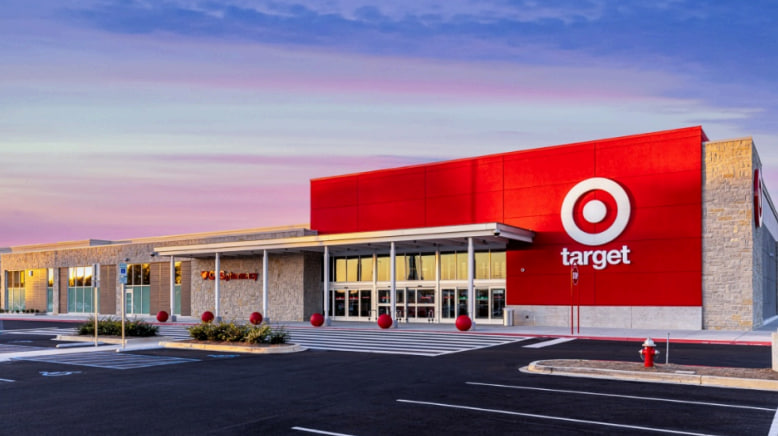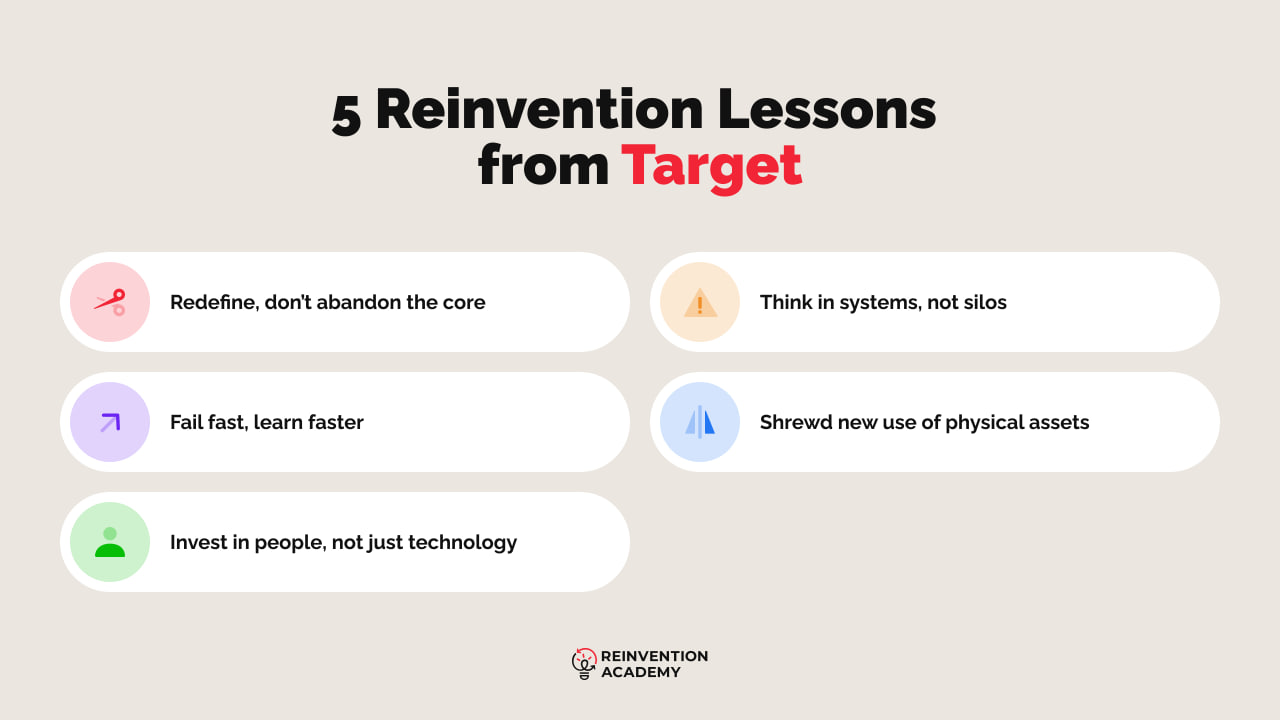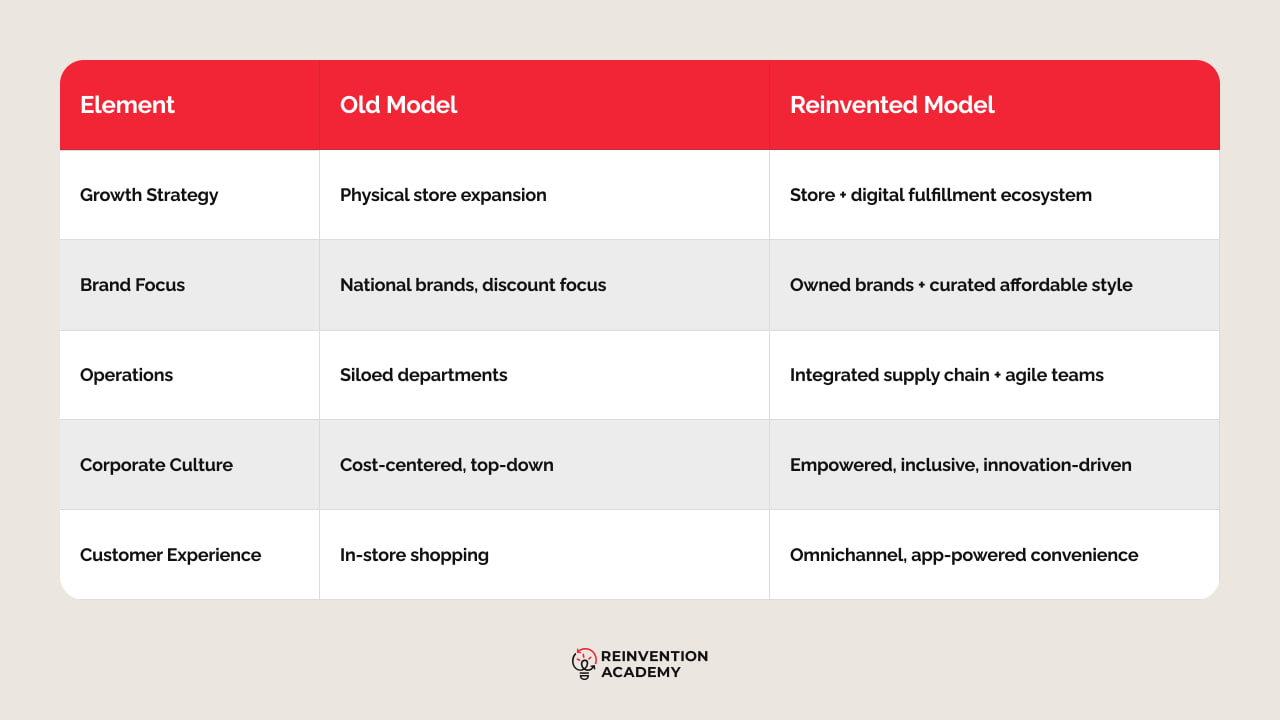Target’s Reinvention Playbook: How a Retail Giant Made a Comeback
Curious how Target overcame challenges and reinvented itself? This case shows how even a long-established giant can successfully transform.

Hitting the Bullseye: Why Target Had to Reinvent
Back in the days of mom-and-pop stores, there was a lot of variety and individuality. Then, stores began buying up small family businesses into larger and larger giants. One of the first of these was Walmart, with Target alongside it as its biggest competitor, managing to differentiate itself through the 60s discounts model that came to predominate. It operated a bunch of warehouses and filled them full of overstocked goods so it could sell them at remarkably low prices. Later on, it managed to thread the needle of maintaining an upscale yet discounters’ reputation simultaneously.
In addition, Target used very basic, small black-and-white ads saying, “How are we giving it away for so little?” Buying up other shops that couldn’t keep up, gave it an early edge to keep gobbling up competitors. It managed to outcompete other big chains like Macy’s, launching many new homegrown ideas from its original Minneapolis base.
With the rise of nimble internet stores like Amazon and eBay, however, Target was suddenly struggling to stay above water. On top of that, it suffered a horrible data breach in 2013 with the credit card information of over 40 million customers getting stolen. To make matters worse, Target suffered a gaffe when it invested billions into a Canada expansion that fell flat on its face, withdrawing from the country in 2015.
Target’s Reinvention Blueprint: From Aisles to Algorithms
These struggles endured as times changed, and it fought to keep electronic threats at bay and expand into e-commerce business intervention, which led Target to have to bring about a change in leadership. Brian Cornell was the new experienced executive selected for retail transformation. The man had an ordinary working-class background who understood what the typical shopper wanted. In addition to that, he’d completed schooling at the UCLA School of Management before excelling as a top executive at Sam’s Club and PepsiCo.
The dramatic business reinvention that was to come wasn’t the result of a single initiative—it was a holistic, company-wide transformation that touched every aspect of the business. The company blended its iconic in-store experience witha new Target digital strategy, creating a more agile and customer-centric retail model.
Store of the Future
Previously, Target had only provided home deliveries to customers who placed orders of over $30. After 2018, it began providing free two-day deliveries for all orders. In the case of the biggest cities, it even provided overnight orders. It also invested billions to remodel stores, redesign layouts, and create more localized assortments tailored to neighborhood demographics. Many locations were reimagined with dual entrances—one for shoppers browsing and another for quick, drive-up pickups.
Omnichannel Integration
The retailer also improved its mobile app, enhanced personalization features, and streamlined checkout with features like curbside pickup, same-day delivery via Shipt, and in-store order pickup.
By investing in omnichannel retail strategy, data analytics, and supply chain coordination, Target ensured customers could shop however and whenever they wanted, without friction. This digital-forward retail transformation not only improved customer satisfaction but also positioned Target as a serious competitor to online-first retailers.
Two Key Enablers that Powered Target’s Reinvention
A company is only as potent and skilled as the employees and executives who make it up. However, the Target case study was fueled by investments in technology and stores and deep shifts in culture and business reinvention.
1. Empowering Team Culture
Under Brian Cornell’s leadership, the company rebuilt its internal culture around trust, accountability, and empowerment. People were given way more freedom than before for cross-functional collaboration and taking risks as leaders, thus building a faster-developing Target business strategy. Teams had autonomy to act in the best interests of customers. One of the big ways Target achieved this was by increasing its wages to a minimum of $12 an hour starting pay.
2. Operational Innovation
This included revamping its supply chain, implementing real-time inventory tracking, and expanding its use of machine learning for demand forecasting. The company invested in next-generation distribution centers and leveraged automation to improve efficiency and target brand strategy.
It came up with more Target private label brands. Retail reinvention examples include their online store, loyalty programs, and other perks.

Dr. Nadya Zhexembayeva’s Reinvention Lens on Target
Dr. Nadya Zhexemayeva, author of The Chief Reinvention Officer Handbook: How to Thrive in Chaos, took particular interest in Target’s reinvention story as an essential symbol of the new environment we all live in. Back in the 60s, 70s, and 80s, the same business models operated successfully for several decades. Many people worked for the same companies their whole lives, products changed little, and the same processes were continued to serve the same ends for customers.
The digital and internet age has shattered that distant past, as now business models hardly ever last more than a few years. For this reason, Zhexembayeva preaches the need for constant business reinvention. She, meanwhile, emphasizes that this doesn’t mean throwing everything a company used to do in the dustbin. Rather, what this means is taking the absolute best facets of a company, and then, as the demanding, rocky transformations of society come along, shedding the former skin of the past and constantly emerging out of that with a whole new side of the company. constantly
Business reinvention must be repeated repeatedly, and companies must constantly prepare for new changes to their business models every few years. In the Target case study, they didn’t abandon the Target business strategy of selling upscale products at discount prices. They devised clever, sophisticated, satisfying ways for those sales and that convenience to evolve. That includes roadside pickups, free home deliveries, supply chain optimization, and Target digital strategy.
5 Reinvention Lessons from Target for Leaders
With Target’s reinvention, being the massive behemoth that it is, of course, smaller businesses will look up to it and analyze the lessons from Target’s reinvention in a myriad of approaches. This creates a playbook for navigating disruption.
Here are the main Target reinvention lessons to draw:
- Redefine, don’t abandon the core: Target didn’t walk away from the Target business strategy as a mass-market retailer. Instead, it reimagined what that identity could look like in a digital age, combining affordable style with convenience and Target's digital strategy.
- Shrewd new use of physical assets: While many retailers were closing stores, Target transformed its locations into fulfillment hubs.
- Invest in people, not just technology: Technology alone doesn’t create transformation. Target’s cultural shift, empowering teams, building trust, and encouraging innovation, proved just as critical as any Target brand strategy.
- Fail fast, learn faster: After the costly failure in Canada, Target didn’t retreat into caution. Instead, it became more agile and iterative, launching test-and-learn initiatives across its business.
- Think in systems, not silos: Target’s reinvention examples hinged on aligning digital, physical, and operational elements into a cohesive strategy.
Target Reinvention at a Glance

Final Thought: Why Target’s Reinvention Still Hits the Mark
How Target reinvented itself is more than a story of corporate comeback—it’s a case study in strategic clarity, cultural resilience, and customer obsession. In an era where many legacy retailers have faded, Target has not only remained relevant but has also redefined what relevance means in modern retail transformation.
By blending Target's digital strategy with human-centered leadership, the company proved that reinvention isn't just a one-time pivot: it's an ongoing discipline. For leaders everywhere, the Target case study is a clear reminder that the bullseye isn’t a fixed point; it’s something you keep aiming for, again and again.


.svg)